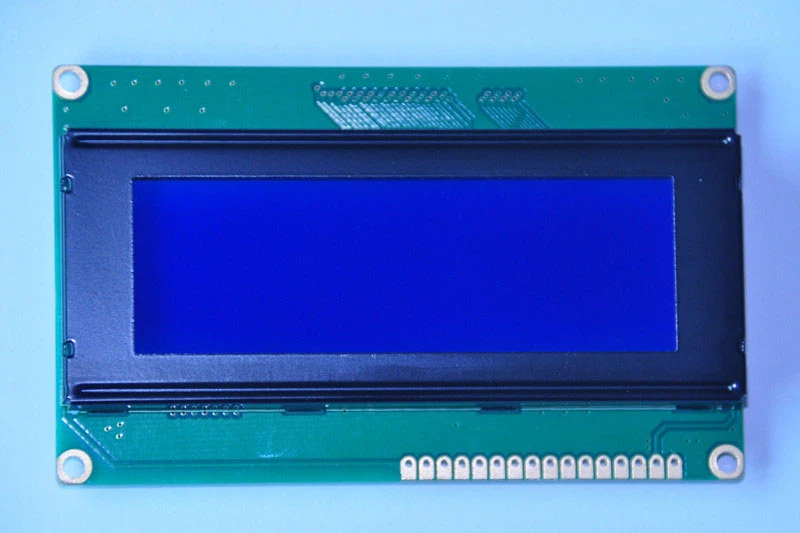As users of modern technology, we see amazing things coming out all the time at a quick pace, and it’s very impressive. Our lives are much more simple because of these new inventions. We no longer have to spend hours and hours doing tedious chores and stuff around the house. Now there’s no need for that. Each day, we rely on modern technological developments to get most of our tasks done. With the new electronic appliances always popping up, companies are always trying to find new ways to get us to buy something and try a new product.
There’s a product that’s been here for such a long time. And that’s the fascinating LCD screen. Our LCD screens have developed so much in the last decades. It’s almost impossible to imagine how far they’ve come. Decades ago, we had big robust screens and now look at us. Our LCD screens are modern and super slim. But, with all the advanced technology we have today, why do we still need monochrome screens? These screens are so basic and so simple, some might even say old-fashioned. But they are still so popular. How is that even possible?
In this blog post, we’re going to go through the history of LCDs and see how they started years ago. We’ll take a look at their development and advancement over time. Afterwards, we’ll dig deep into the world of monochrome LCDs, the simple black and white screens, and talk about why they’re still so important in our lives. As we reflect on their long history, we’ll discover the special features and different ways monochrome screens are used in different industries all around the world.
A brief reflection of LCD history
In the late 1960s the scientists were really busy trying to figure out how to use liquid crystals. A decade later they actually managed to make a display using liquid crystal displays. This was a huge step forward for science. We no longer needed to rely on the power-consuming cathode-ray tubes like before. The most important moment was the discovery of TN technology. This let them control the way light worked. Of course, they did this with a bit of help from liquid crystals.
This big development made LCDs lighter and power-saving. Just some time later, they applied LCDs in digital watches, calculators and later, computer screens and TVs as well. With time, they made LCDs even better and improved them by adding some new features.
Monochrome screens in medical devices
These black and white displays play a huge role in the medical industry of the modern world. Monochrome screens are reliable, durable and power-efficient. They’re also more affordable than color LCD displays which is also a big plus. The advantages of the monochromatic screen for the medical industry are numerous.
Medical imaging
Monochrome LCD screens are often used in different medical imaging devices. For example, X-ray machines, CT scans and a variety of MRI machines. All of these rely on a monochrome LCD screen to display information. Monochrome displays show information clearly and precisely. That way doctors are able to read the data quickly and provide a correct diagnosis for the patient. The greyscale images show detailed information because of their high contrast and detail.
Patient monitoring
Monochrome screens are also used in patient monitoring systems. They display vital signs, such as heart rate and blood pressure.. The high contrast of monochrome screens makes it easy for healthcare professionals to read these important metrics immediately. In urgent situations, a healthcare professional needs to be able to just look at the screen and understand the information. And monochrome LCDs allow just that.
Medical instruments
Monochrome screens are used across different medical instruments. For instance, ultrasound machines, endoscopes, and surgical cameras. These screens provide clear and detailed images, helping healthcare professionals perform procedures with precision. These procedures require a reliable screen and monochrome displays are able to show all the data necessary in a clear way.
Electronic health records (EHR)
Reading electronic health records (EHR) in hospitals and clinics is much easier with monochrome screens. Their high contrast makes it easy to read text and view medical images on these devices. Again, monochrome screens excel in precision and high-level of detail.
Medical grade monitors
Monochrome monitors are used in operating rooms and other medical settings where high-resolution, high-contrast displays are needed for viewing medical images and patient data. Surgeries are never easy and doctors need to read data carefully and follow the patient’s vital signs. That’s why in operating rooms, monochrome screens are almost a necessity.
The key takeaways
Monochrome LCD technology is widespread and the numerous examples show that the medical industry wouldn’t be the same without them. Their simplicity combined with their functionality is what makes them an unbeatable combination. Their reliability is of great use for doctors; the greyscale images can provide them with all the information they need in a precise way. Although simple, monochrome screens are still important and they are still present across different industries. So, it’s still not time to write them off.

